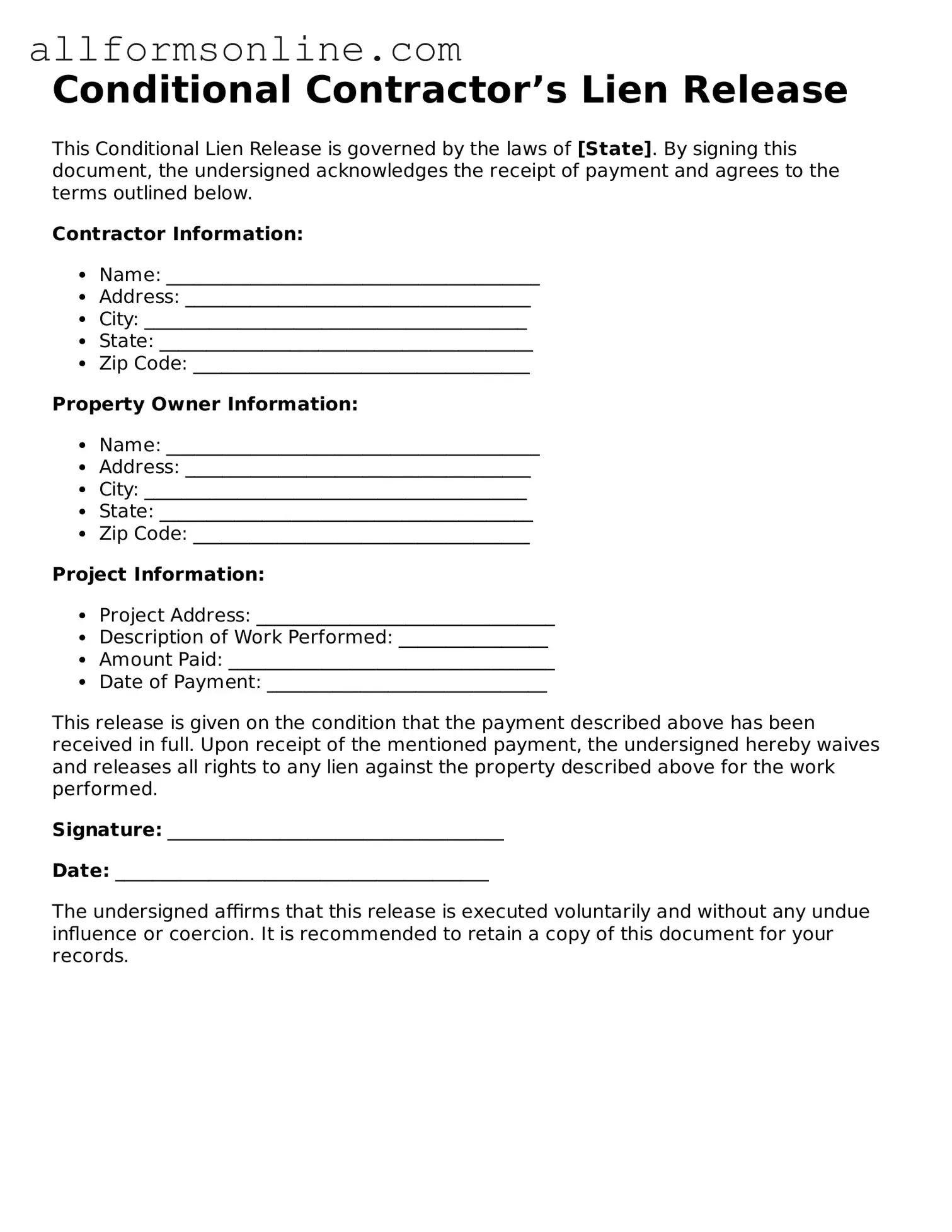What is a Conditional Contractor’s Lien Release form?
A Conditional Contractor’s Lien Release form is a document that a contractor or subcontractor can use to release a lien on a property, but only under certain conditions. This means that the release is effective only if the contractor receives payment for the work completed. It protects the contractor’s right to claim a lien if payment is not made.
When should I use a Conditional Contractor’s Lien Release form?
You should use this form when you want to ensure that you can still file a lien if you do not receive payment after signing the release. It is particularly useful in situations where you are providing a release to a property owner or general contractor but want to maintain your rights to claim a lien if necessary.
What information is typically included in the form?
The form generally includes details such as the names of the parties involved, a description of the property, the amount owed, and a statement indicating that the release is conditional upon receiving payment. It may also require signatures from both parties to make it legally binding.
Is a Conditional Contractor’s Lien Release form legally binding?
Yes, once properly filled out and signed, the form is legally binding. However, the enforceability may depend on the specific terms outlined in the document and local laws. It’s important to ensure that all necessary details are accurately completed to avoid any disputes later.
What happens if the payment is not received after signing the release?
If payment is not received after you sign a Conditional Contractor’s Lien Release form, you still retain the right to file a lien against the property. This is the main purpose of the conditional release; it allows you to protect your interests while also providing assurance to the other party that you are not relinquishing your rights to payment.
Can I use this form for any type of construction project?
While the Conditional Contractor’s Lien Release form is commonly used in construction projects, it is essential to check local laws and regulations. Some states may have specific requirements or variations for different types of projects, so it’s wise to consult local guidelines before using the form.
Do I need a lawyer to create a Conditional Contractor’s Lien Release form?
While it is possible to create this form without a lawyer, consulting with one can provide valuable guidance. A legal professional can help ensure that the form complies with local laws and adequately protects your rights. It’s always better to be cautious when dealing with legal documents.
How can I ensure that the form is properly executed?
To ensure proper execution of the form, make sure all parties involved read and understand the terms. Both parties should sign and date the document. Keep copies for your records, and if possible, have a witness or notary public present during the signing to further validate the agreement.
Where can I find a template for the Conditional Contractor’s Lien Release form?
You can find templates for the Conditional Contractor’s Lien Release form online through legal document services or local construction associations. However, make sure to use a template that is specific to your state’s laws to ensure compliance and effectiveness.
